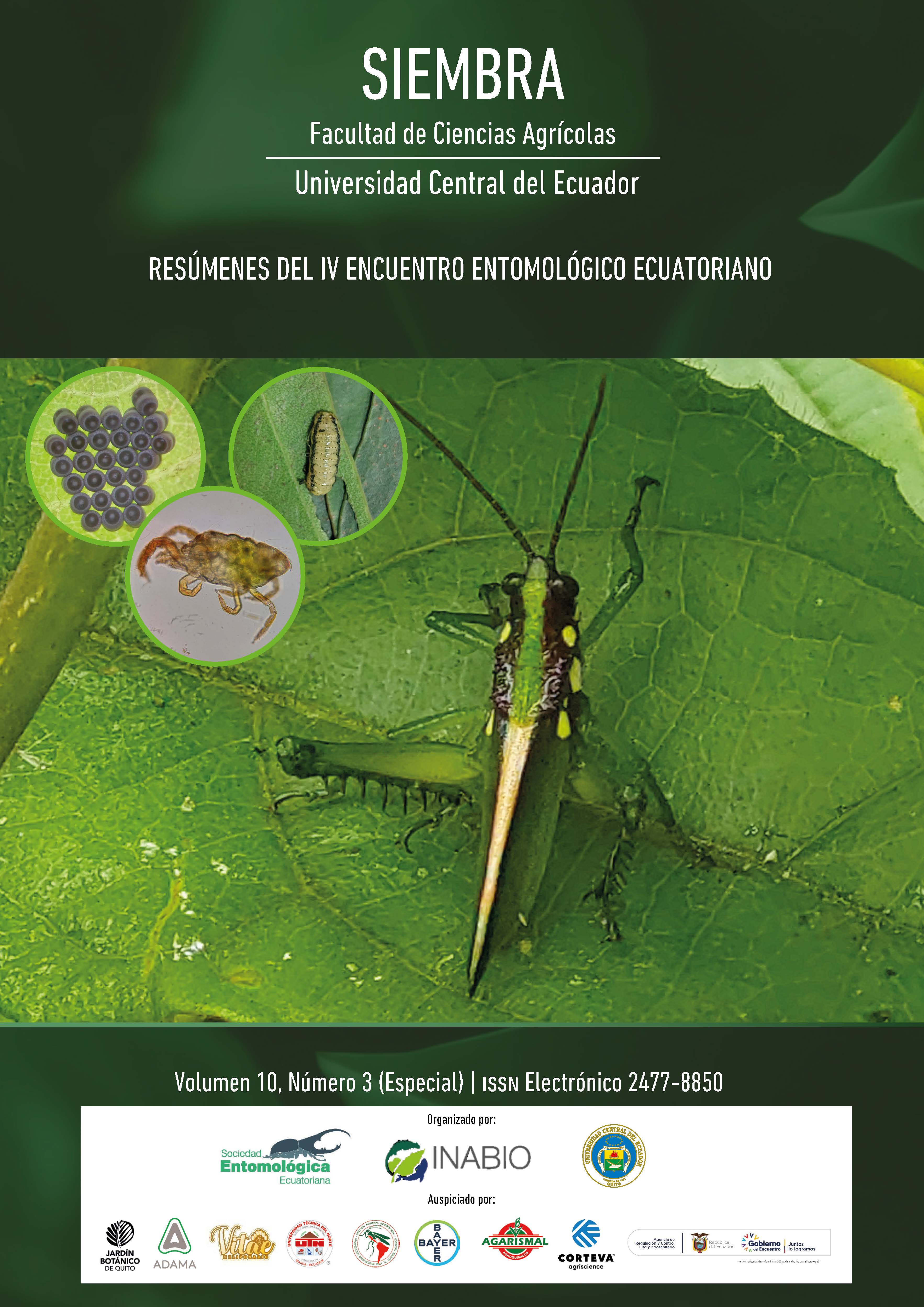ED004. Patterns of species richness of the Euglossini tribe in Ecuador based on niche modeling
Main Article Content
Abstract
Orchid bees (tribe Euglossini) are an exciting insect group of the Neotropical region. This thesis project studied the rich patterns of orchid bees in Ecuador, using data from collections, publications, and fieldwork. With this information, we estimated the potential distribution areas for each species using the Maximum Entropy principle with the climatic variables of CHELSA. As a result, 32 Ecological Niche Modeling maps were generated. Then, based on the superposition of these reclassified models, a species richness map was generated. This map identifies the species richness patterns for Ecuador, with the wealthiest zones (24 sp.) being on the eastern foothills of the central and northern parts of the country. We consider these areas' ecological, historical, and conservation characteristics important precursors and determinants of the observed patterns.
Downloads
Metrics
Article Details

This work is licensed under a Creative Commons Attribution-NonCommercial 4.0 International License.
The authors who publish in Siembra know and accept the following conditions:
- Authors retain the copyright and grant Siembra the right of first publication of the work, under the Creative Commons Attribution License. Third parties are allowed to use what has been published as long as they refer to the author or authors of the work and its publication in this journal.
![]() This content is licensed under a Creative Commons Attribution-Noncommercial 4.0 International (CC BY-NC 4.0).
This content is licensed under a Creative Commons Attribution-Noncommercial 4.0 International (CC BY-NC 4.0).
- Authors maintain the copyright and guarantee Siembra the right to publish the manuscript through the channels it considers appropriate.
- Authors may establish on their own additional agreements for the non-exclusive distribution of the version of the work published in Siembra, acknowledging their initial publication in the same, such as in institutional repositories.
- Authors are authorized to disseminate their work electronically once the manuscript is accepted for publication.

